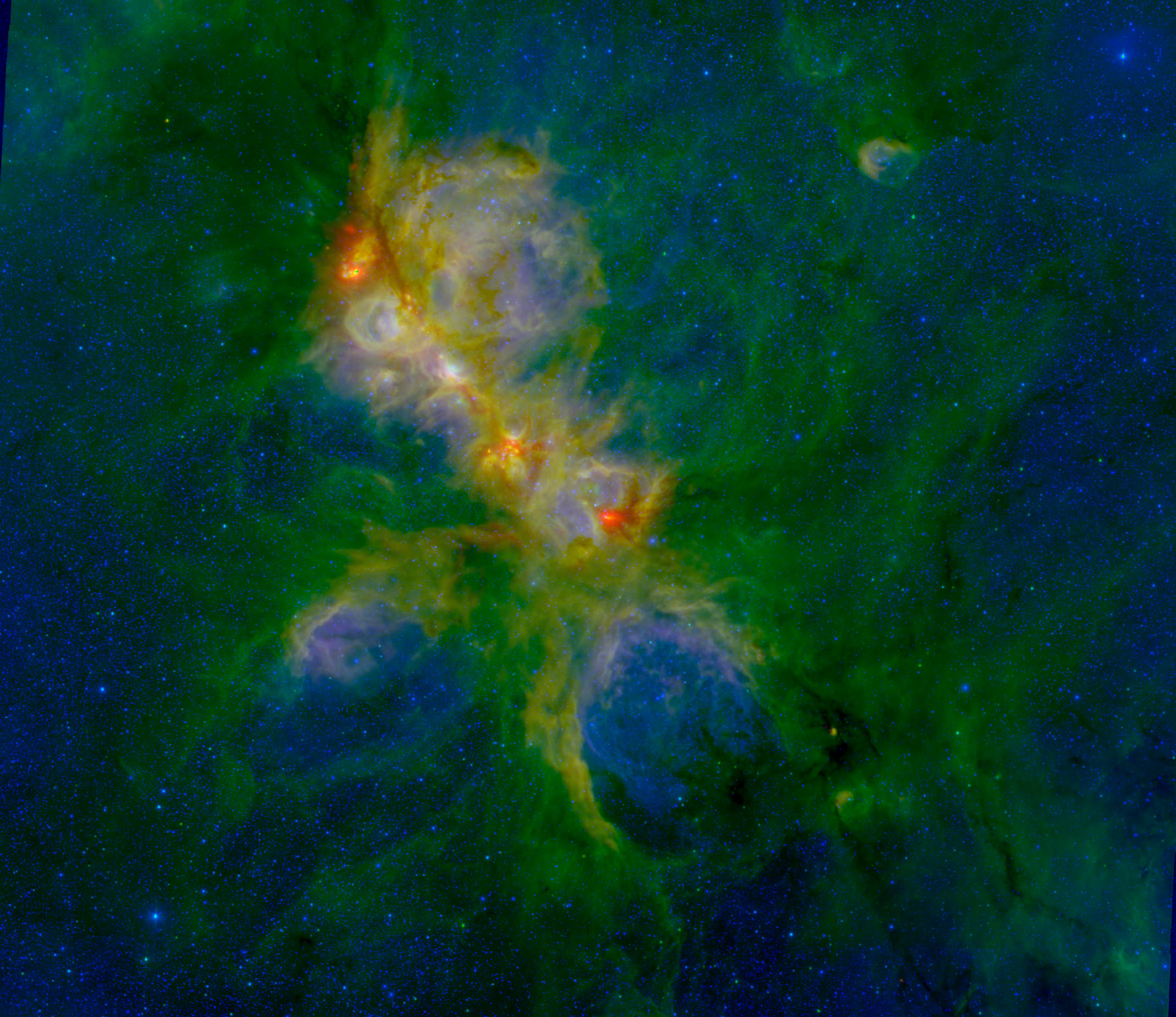Over over 50% of high mass stars reside in multiple star systems. But due to their complex orbital interactions, physicists have a difficult time understanding just how stable and long-lived these systems are. Recently a team of astronomers applied machine learning techniques to simulations of multiple star systems and found a new way that stars in such systems can arrange themselves.
Classical mechanics has a notorious problem known as the three-body problem. While Newton’s laws of gravity can easily handle calculations of the forces between two objects and their subsequent evolution, there is no known analytic solution when you include a third massive object. In response to that problem, physicists over the centuries have developed various approximation schemes to study these kinds of systems, concluding that the vast majority of possible three-object arrangements are unstable.
But it turns out that there are a lot of multiple-star systems out there in the galaxy. Indeed, over half of all massive stars belong to at least a binary pair, and many of them belong to triple or quadruple star systems. Obviously the systems last a long time, otherwise they would have flung themselves apart a long time ago before we had a chance to observe them. But because of the limitations of our tools we have difficulty assessing how these systems organize themselves and what the stable orbit options exist.
Recently a team of astronomers conducted tens of thousands of simulations of quadruple star systems, varying the mass and orbital distances of all the objects. They then ran the simulation outputs through a machine learning classifier to pull out general trends and categories for the structures of the stable orbits.
They found one such structure of orbits that was already familiar to old analytic techniques. This is the so-called nested triple system. You start with two stars close together orbiting around a common center of mass. Then you add a third star in a large enough orbit around those other two so that from that distance the other two might as well be a single star. Then to add a fourth star you put it at an even greater distance so it orbits around the other three.
But their simulations and machine learning analysis also found a new kind of orbital arrangement. In this arrangement, you have two sets of binary stars, with each set orbiting around a common center of mass.
This arrangement was just as stable as the nested triple arrangement and led to systems that could last for hundreds of millions of years.
Astronomers want to understand how these systems arrange themselves because that tells us how the stars themselves form. Understanding the present day structure of stellar orbits in multiple-star systems helps us unwind the clock to peer into their formation, and tells astronomers how the largest stars in the universe evolve.

